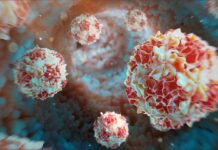The World Environment Day which was observed recently (June 5) once again sounded the alarm on the rather massive and presumably unsolvable issue of plastic pollution that costs the globe up to $600 billion annually.
Plastic is one of the most pervasive and persistent pollutants and permeates every aspect of the economy. The linear economic model, a sharp increase in single-use plastic consumption, and an expanding throw-away culture have all contributed to making plastic an inextricable part of the material world. The plastic lifecycle poses grave risks to human health by way of global greenhouse gas emissions and, indeed, the phenomenon of climate change.
Alarmingly, it is estimated that plastic production soared from two million metric tonnes in 1950 to 375 million metric tonnes in 2017, out of which new plastic was 370 million metric tonnes and residual plastic was five million metric tonnes. While only 10 million metric tonnes of all plastic ever discarded since 1950 has been recycled, another 20 million metric tonnes has been incinerated, 215 million metric tonnes thrown into landfills, eight million metric tonnes dumped in the waterways and oceans, and 32 million metric tonnes remaining mismanaged plastic has been buried or has ended up in open yards for burning and dumping, and remains scattered across human and natural landscapes worldwide.
Despite being aware of the devastating chemicals associated with plastic which may be released along its entire lifecycle because there is no end of life for plastic, and have a negative influence on both our health and the environment, society continues to rely on it.
Shockingly, more than 13,000 chemicals have reportedly been linked to plastic and plastic production across a wide range of applications. It is believed that 3,200 of them, including specific flame retardants, certain ultraviolet (UV) stabilisers, per- and poly-fluoro-alkyl substances (PFASs), phthalates, bisphenols, alkylphenols and alkylphenol ethoxylates, biocides, certain metals and metalloids, polycyclic aromatic hydrocarbons, and many other non-intentionally added substances (NIAS), are of concern because of their high toxicity.
In the light of growing public concern regarding the plastic pollution crisis, numerous plastic pollution mitigation strategies must be taken into consideration. These include high-priority strategies, such as stopping the production and using of single-use, disposable plastic products, stopping new and expanded petrochemical and plastic production infrastructure, zero-waste communities and extended producer responsibility for circular economy.
Low-ambition strategies include ocean plastic recycling, energy efficiency maximisation throughout the plastic supply chain, and putting in place modern landfills.
Proffered solutions to the issue include a substantial tax on the use of plastics, and ocean clean-up. And the time to start taking all such steps is now. There is no time to waste any further.
DR AINY ZEHRA
KARACHI






















